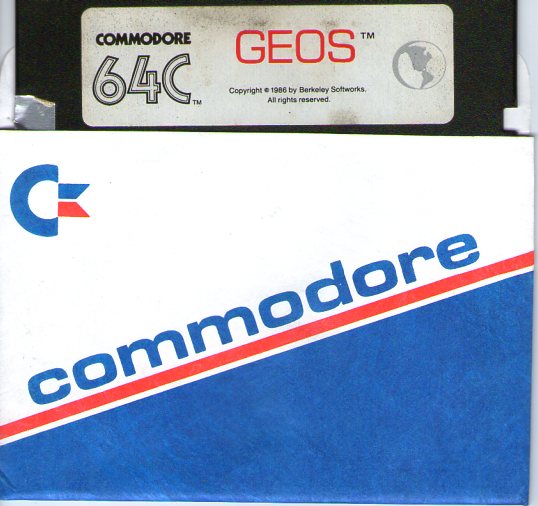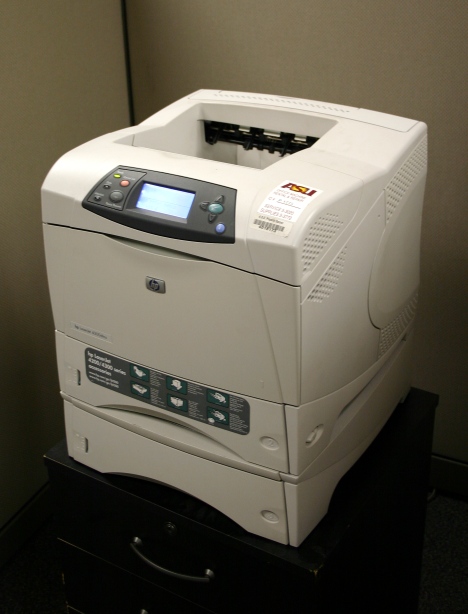|
GeoPublish
geoPublish is a discontinued desktop publishing program made by Berkeley Softworks for their GEOS Operating System. geoPublish brought proper Desktop Publishing to the Commodore 64. With Left and Right Master Pages page layout work was simplified with the ability to work on the full page at once. Other features included autoflow text placement, the ability to create 16-page documents (with page numbering up to 256 to facilitate chaining documents), a suite of object-oriented drawing tools, and the ability to scale fonts from 4-192 points. geoPublish is capable of outputting PostScript page descriptions to laser printers and is used for creating posters, newsletters, and even books. Versions A version for the Commodore 64 was released in 1986. It was ported to the Apple II Apple II ("apple Roman numerals, two", stylized as Apple ][) is a series of microcomputers manufactured by Apple Computer, Inc. from 1977 to 1993. The Apple II (original), original Apple II model, wh ... [...More Info...] [...Related Items...] OR: [Wikipedia] [Google] [Baidu] |
GEOS (8-bit Operating System)
GEOS (''Graphic Environment Operating System'') is a discontinued operating system from Berkeley Softworks (later GeoWorks). Originally designed for the Commodore 64 with its version being released in 1986, enhanced versions of GEOS later became available in 1987 for the Commodore 128 and in 1988 for the Apple II. A lesser-known version was also released for the Commodore Plus/4. GEOS closely resembles early versions of the classic Mac OS and includes a graphical word processor (geoWrite) and Computer graphics, paint program (geoPaint). A December 1987 survey by the Commodore-dedicated magazine '' Compute!'s Gazette'' found that nearly half of respondents used GEOS. For many years, Commodore bundled GEOS with its redesigned and cost-reduced C64, the C64C. At its peak, GEOS was the third-most-popular microcomputer operating system in the world in terms of units shipped, trailing only MS-DOS and Mac OS (besides the original Commodore 64's KERNAL). Other GEOS-compatible softwar ... [...More Info...] [...Related Items...] OR: [Wikipedia] [Google] [Baidu] |
Berkeley Softworks
Berkeley Softworks, Inc., later GeoWorks Corporation, was an American software-development company founded by American computing engineer and former Mattel Mattel, Inc. ( ) is an American multinational corporation, multinational toy manufacturing and entertainment company headquartered in El Segundo, California. Founded in Los Angeles by Harold Matson and the husband-and-wife duo of Ruth Handler, ... employee Brian P. Dougherty in 1983. It is best known for its GEOS operating systems for GEOS (8-bit operating system), GEOS for the Commodore 64, 64c, plus 4, Apple II and the c128 and GEOS (16-bit operating system), PC/GEOS, also known as ''GeoWorks ensemble'' or simply ''GeoWorks''. The company ceased operations in 2003 after it was bought by various other companies. History Berkeley Softworks, Inc., was founded in Berkeley, California, by Brian P. Dougherty in 1983 as The Softworks. Before starting his company, Dougherty—a graduate of University of California, Berkeley, UC ... [...More Info...] [...Related Items...] OR: [Wikipedia] [Google] [Baidu] |
Desktop Publishing
Desktop publishing (DTP) is the creation of documents using dedicated software on a personal ("desktop") computer. It was first used almost exclusively for print publications, but now it also assists in the creation of various forms of online content. Desktop publishing software can generate page layouts and produce text and image content comparable to the simpler forms of traditional typography and printing. This technology allows individuals, businesses, and other organizations to self-publish a wide variety of content, from menus to magazines to books, without the expense of commercial printing. Desktop publishing often requires the use of a personal computer and WYSIWYG page layout software to create documents for either large-scale publishing or small-scale local printing and distribution although non-WYSIWYG systems such as TeX and LaTeX are also used, especially in scientific publishing. Originally, desktop publishing methods provided more control over design, layou ... [...More Info...] [...Related Items...] OR: [Wikipedia] [Google] [Baidu] |
Page Layout
In graphic design, page layout is the arrangement of visual elements on a page. It generally involves organizational principles of composition to achieve specific communication objectives. The high-level page layout involves deciding on the overall arrangement of text and images, and possibly on the size or shape of the medium. It requires intelligence, sentience, and creativity, and is informed by culture, psychology, and what the document authors and editors wish to communicate and emphasize. Low-level pagination and typesetting are more mechanical processes. Given certain parameters such as boundaries of text areas, the typeface, and font size, justification preference can be done in a straightforward way. Until desktop publishing became dominant, these processes were still done by people, but in modern publishing, they are almost always automated. The result might be published as-is (as for a residential phone book interior) or might be tweaked by a graphic designer (as ... [...More Info...] [...Related Items...] OR: [Wikipedia] [Google] [Baidu] |
PostScript
PostScript (PS) is a page description language and dynamically typed, stack-based programming language. It is most commonly used in the electronic publishing and desktop publishing realm, but as a Turing complete programming language, it can be used for many other purposes as well. PostScript was created at Adobe Systems by John Warnock, Charles Geschke, Doug Brotz, Ed Taft and Bill Paxton from 1982 to 1984. The most recent version, PostScript 3, was released in 1997. History The concepts of the PostScript language were seeded in 1976 by John Gaffney at Evans & Sutherland, a computer graphics company. At that time, Gaffney and John Warnock were developing an interpreter for a large three-dimensional graphics database of New York Harbor. Concurrently, researchers at Xerox PARC had developed the first laser printer and had recognized the need for a standard means of defining page images. In 1975–76 Bob Sproull and William Newman developed the Press format, whic ... [...More Info...] [...Related Items...] OR: [Wikipedia] [Google] [Baidu] |
Laser Printing
Laser printing is an electrostatic digital printing process. It produces high-quality text and graphics (and moderate-quality photographs) by repeatedly passing a laser beam back and forth over a Electric charge, negatively charged cylinder called a "drum" to define a differentially charged image. The drum then selectively collects electrically charged powdered ink (toner (printing), toner), and transfers the image to paper, which is then heated to permanently fuse the text, imagery, or both to the paper. As with digital photocopiers, laser computer printer, printers employ a Xerography, xerographic printing process. Laser printing differs from traditional xerography as implemented in analog photocopiers in that in the latter, the image is formed by reflecting light off an existing document onto the exposed drum. The laser printer was invented at Xerox PARC (company), PARC in the 1970s. Laser printers were introduced for the office and then home markets in subsequent years by IBM ... [...More Info...] [...Related Items...] OR: [Wikipedia] [Google] [Baidu] |
Commodore 64
The Commodore 64, also known as the C64, is an 8-bit computing, 8-bit home computer introduced in January 1982 by Commodore International (first shown at the Consumer Electronics Show, January 7–10, 1982, in Las Vegas). It has been listed in the Guinness World Records as the highest-selling single computer model of all time, with independent estimates placing the number sold between 12.5 and 17 million units. Volume production started in early 1982, marketing in August for . Preceded by the VIC-20 and Commodore PET, the C64 took its name from its of RAM. With support for multicolor sprite (computer graphics), sprites and a custom chip for waveform generation, the C64 could create superior visuals and audio compared to systems without such custom hardware. The C64 dominated the low-end computer market (except in the UK, France and Japan, lasting only about six months in Japan) for most of the later years of the 1980s. For a substantial period (1983–1986), the C64 had betwe ... [...More Info...] [...Related Items...] OR: [Wikipedia] [Google] [Baidu] |
Apple II
Apple II ("apple Roman numerals, two", stylized as Apple ][) is a series of microcomputers manufactured by Apple Computer, Inc. from 1977 to 1993. The Apple II (original), original Apple II model, which gave the series its name, was designed by Steve Wozniak and was first sold on June 10, 1977. Its success led to it being followed by the Apple II Plus, Apple IIe, Apple IIc, and Apple IIc Plus, with the 1983 IIe being the most popular. The name is trademarked with square brackets as Apple ][, then, beginning with the IIe, as Apple //. The Apple II was a major advancement over its predecessor, the Apple I, in terms of ease of use, features, and expandability. It became one of several recognizable and successful computers throughout the 1980s, although this was mainly limited to the US. It was aggressively marketed through volume discounts and manufacturing arrangements to educational institutions, which made it the first computer in widespread use in American secondary ... [...More Info...] [...Related Items...] OR: [Wikipedia] [Google] [Baidu] |
1986 Software
The year 1986 was designated as the International Year of Peace by the United Nations. Events January * January 1 ** Aruba gains increased autonomy from the Netherlands by separating from the Netherlands Antilles. ** Spain and Portugal enter the European Community, which becomes the European Union in 1993. * January 11 – The Gateway Bridge in Brisbane, Australia, at this time the world's longest prestressed concrete free-cantilever bridge, is opened. * January 13– 24 – South Yemen Civil War. * January 20 – The United Kingdom and France announce plans to construct the Channel Tunnel. * January 24 – The Voyager 2 space probe makes its first encounter with Uranus. * January 25 – Yoweri Museveni's National Resistance Army Rebel group takes over Uganda after leading a Ugandan Bush War, five-year guerrilla war in which up to half a million people are believed to have been killed. They will later use January 26 as the official date to avoid a coincidence of dates with ... [...More Info...] [...Related Items...] OR: [Wikipedia] [Google] [Baidu] |
Commodore 64 Software
The Commodore 64 amassed a large software library of nearly 10,000 commercial titles, covering genres from games to business applications. Applications, utility, and business software The Commodore 64’s slow 1541 disk drive limited its suitability as a business computer, yet it was used for tasks like graphics creation, desktop publishing, and word processing. '' Info 64'', the first magazine produced using desktop publishing tools, was created on and dedicated to the Commodore platform. Popular graphics software included KoalaPainter, known for its graphics tablet interface, and Doodle!, a widely used drawing program. Desktop publishing tools like The Print Shop and "The Newsroom" enabled users to create signs, banners, and newsletters. Light pens and CAD software were also available. Word processors such as PaperClip and Vizawrite were popular, alongside the type-in program SpeedScript, published in '' Compute!'s Gazette''. Spreadsheet programs included Multiplan by ... [...More Info...] [...Related Items...] OR: [Wikipedia] [Google] [Baidu] |





